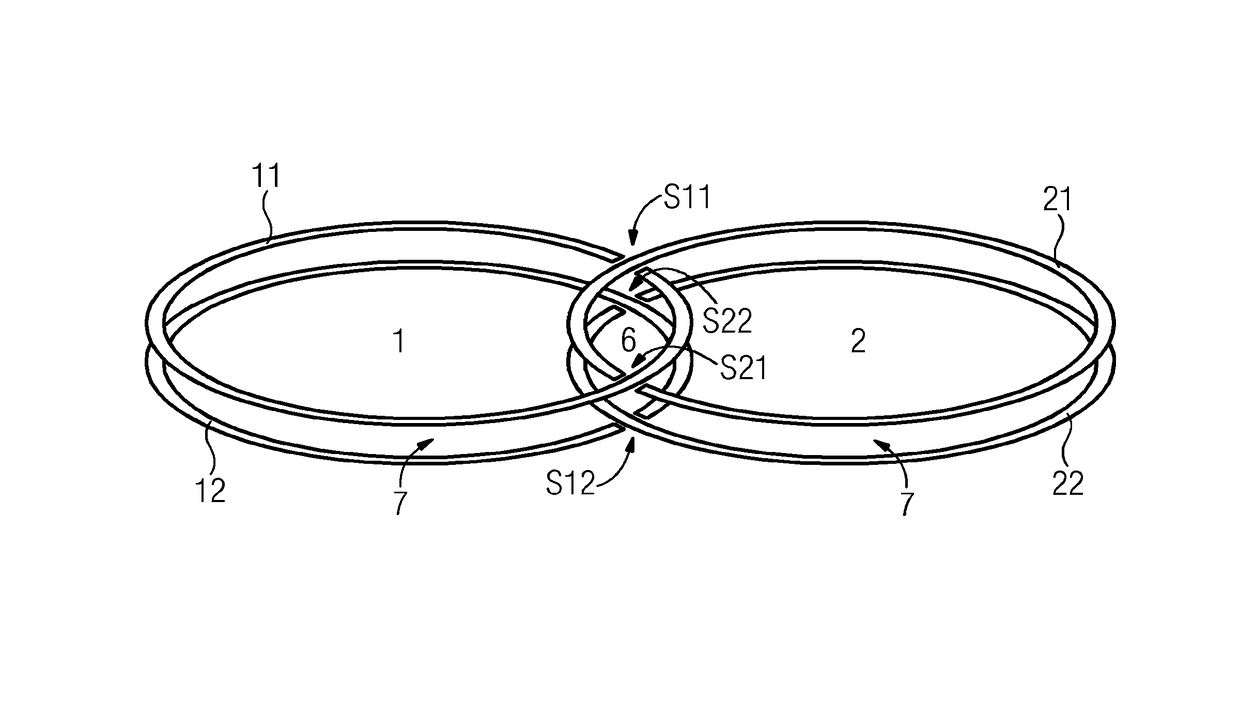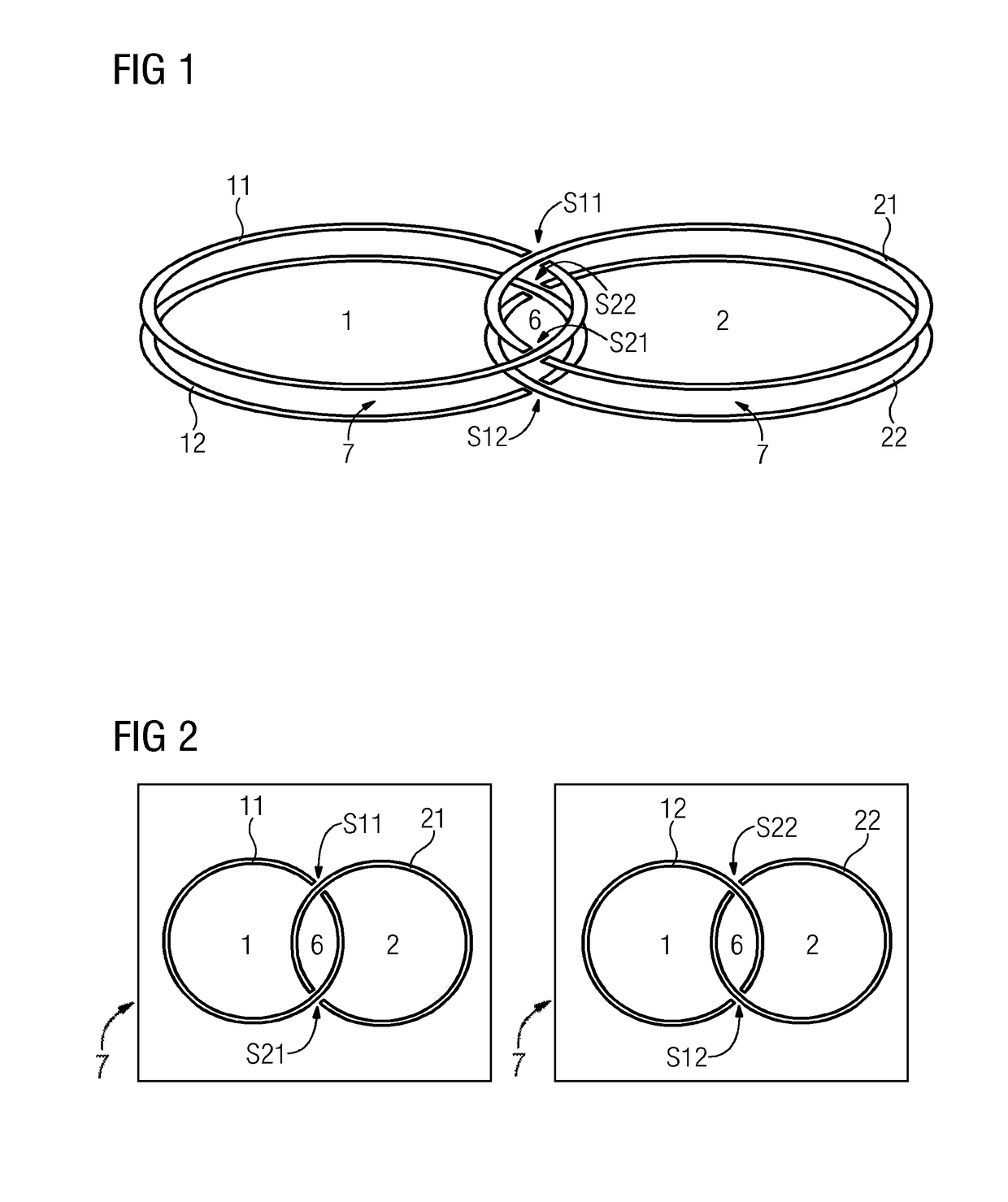Decoupling of split ring resonators in magnetic resonance tomography
a technology of magnetic resonance tomography and split ring resonators, which is applied in the direction of magnetic resonance measurement, measurement devices, instruments, etc., can solve the problems of large restriction of the efficiency of the magnetic resonance tomograph, lengthening the read and/or scan time, and being more complex. , to achieve the effect of high quality
- Summary
- Abstract
- Description
- Claims
- Application Information
AI Technical Summary
Benefits of technology
Problems solved by technology
Method used
Image
Examples
Embodiment Construction
[0022]A perspective view of an embodiment of an arrangement with two split ring resonators 1, 2 is illustrated in FIG. 1 in a simplified fashion. A split ring resonator 1, 2 respectively includes two mutually parallel ring structures 11, 12; 21, 22 of a metal conductor element spaced apart by a substrate 7. The two mutually parallel ring structures 11, 12; 21, 22 are respectively separated by at least one gap S11, S21, S . . . ; S12, S22, S . . . . The two split ring resonators 1, 2 are arranged relative to one another such that the separated ring structures 11, 12 of the two split ring resonators 1, 2 may be reciprocally guided through a gap S11, S12 of the respective other ring structure 21, 22 with the associated gap S21, S22, and interlock. Overlap regions 6 are formed as interface of the respective ring structures 11, 21 and 12, 22. In anticipation of FIG. 2, which illustrates an upper and lower projection view into a substrate plane 7 in accordance with the embodiment from FIG...
PUM
 Login to View More
Login to View More Abstract
Description
Claims
Application Information
 Login to View More
Login to View More - R&D
- Intellectual Property
- Life Sciences
- Materials
- Tech Scout
- Unparalleled Data Quality
- Higher Quality Content
- 60% Fewer Hallucinations
Browse by: Latest US Patents, China's latest patents, Technical Efficacy Thesaurus, Application Domain, Technology Topic, Popular Technical Reports.
© 2025 PatSnap. All rights reserved.Legal|Privacy policy|Modern Slavery Act Transparency Statement|Sitemap|About US| Contact US: help@patsnap.com



